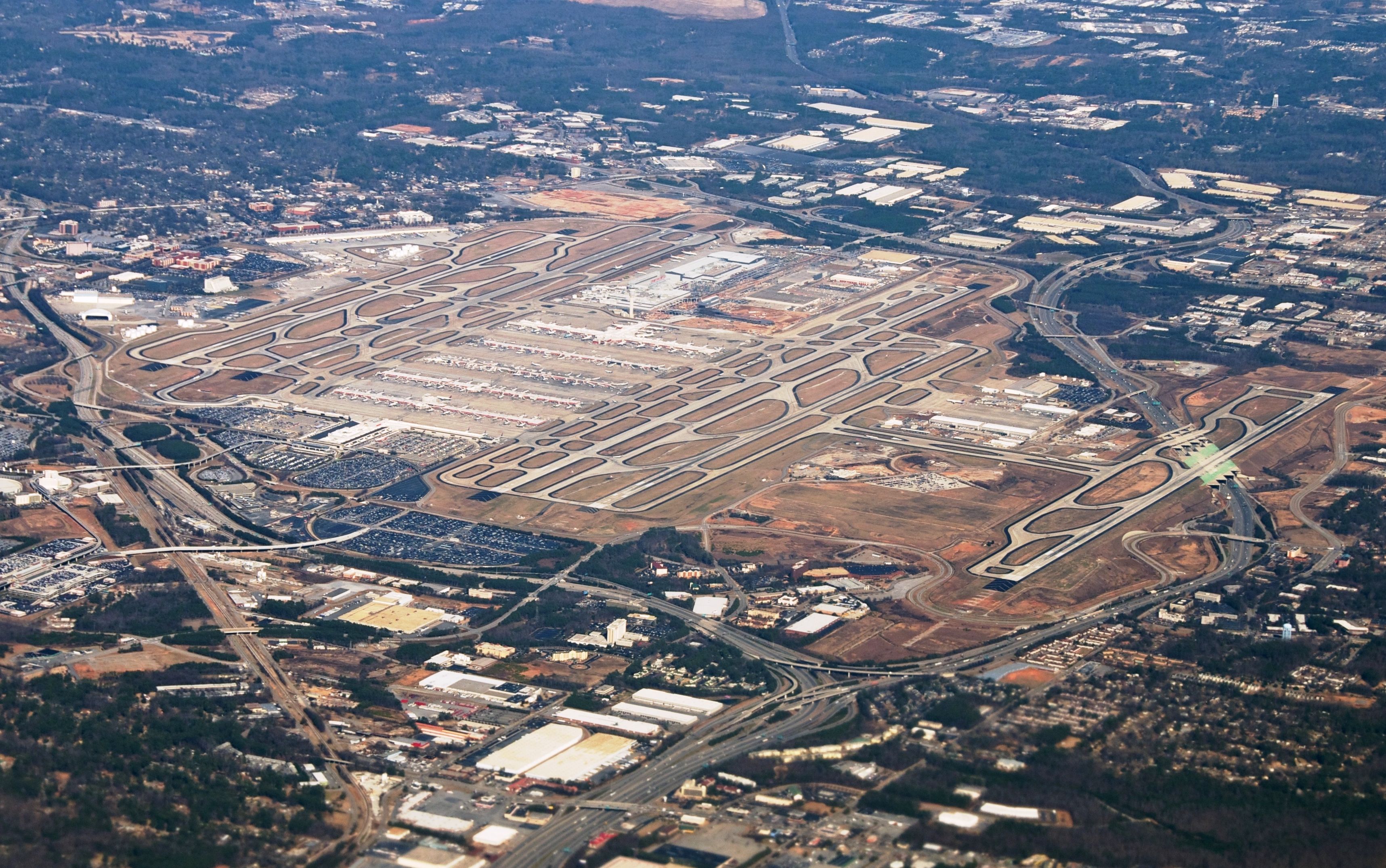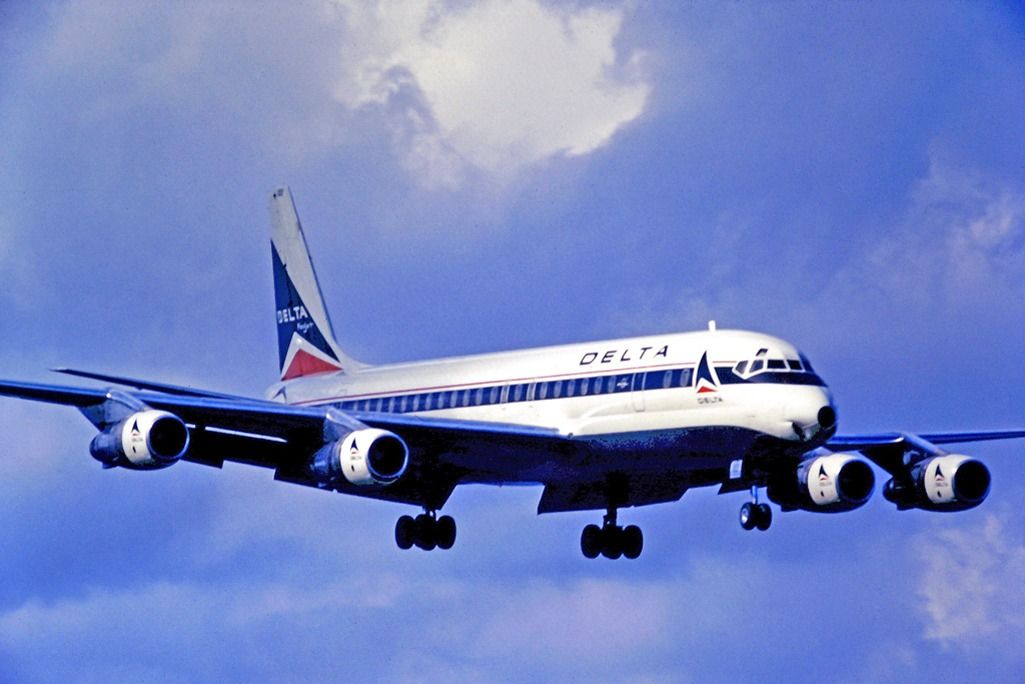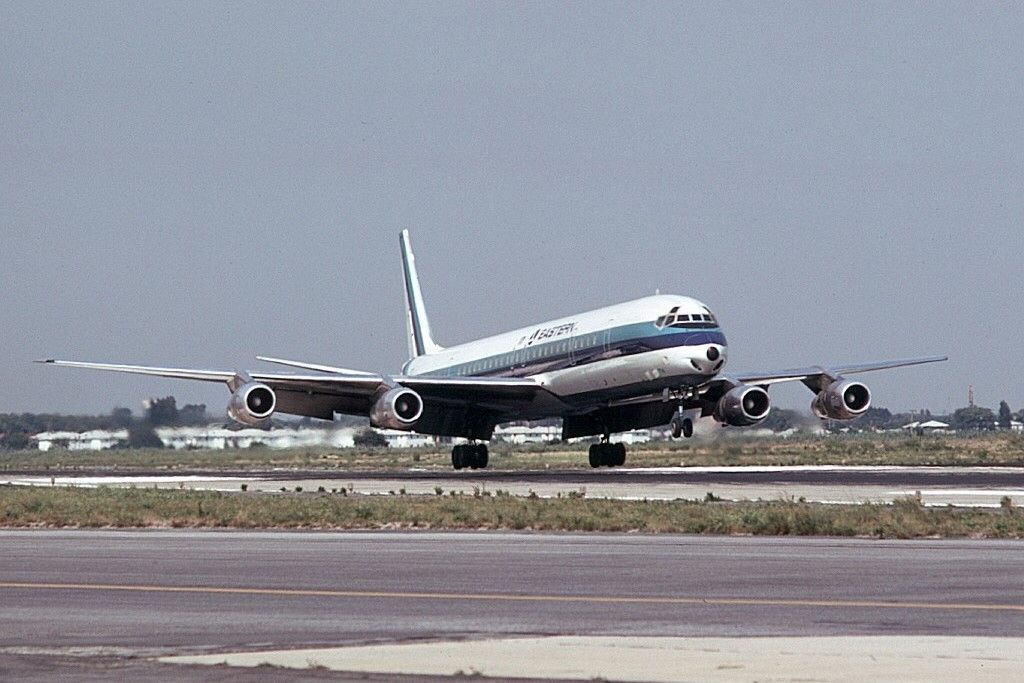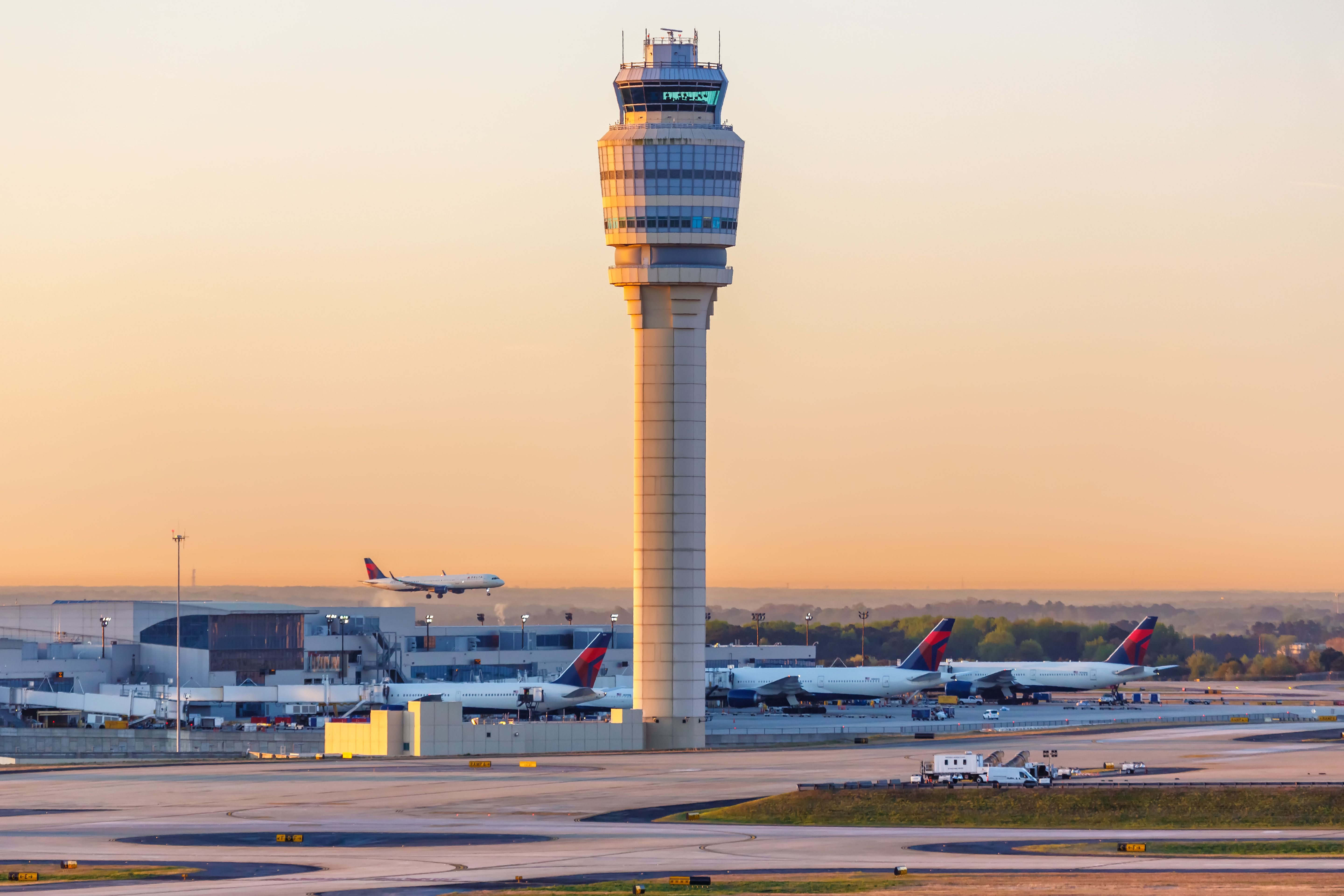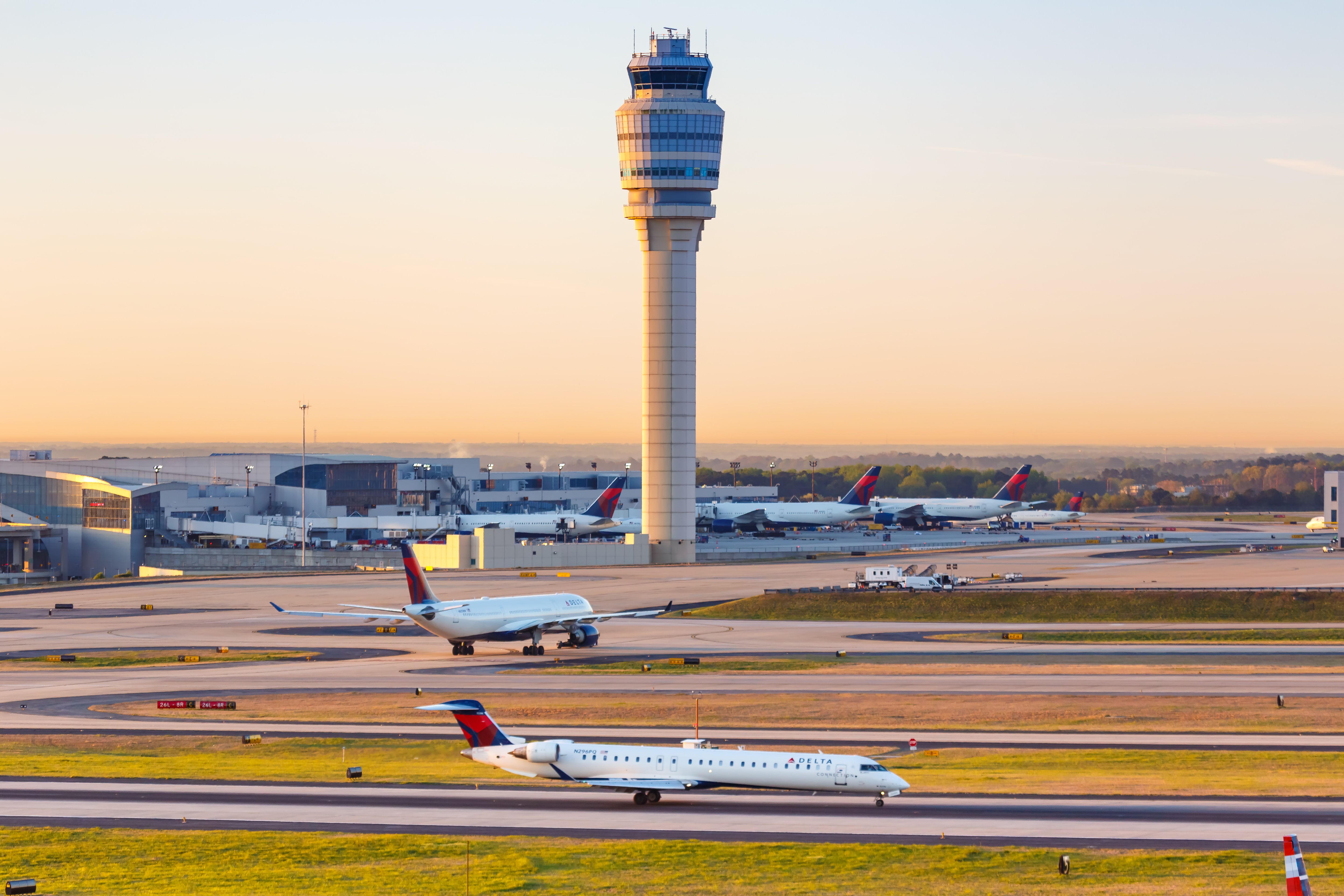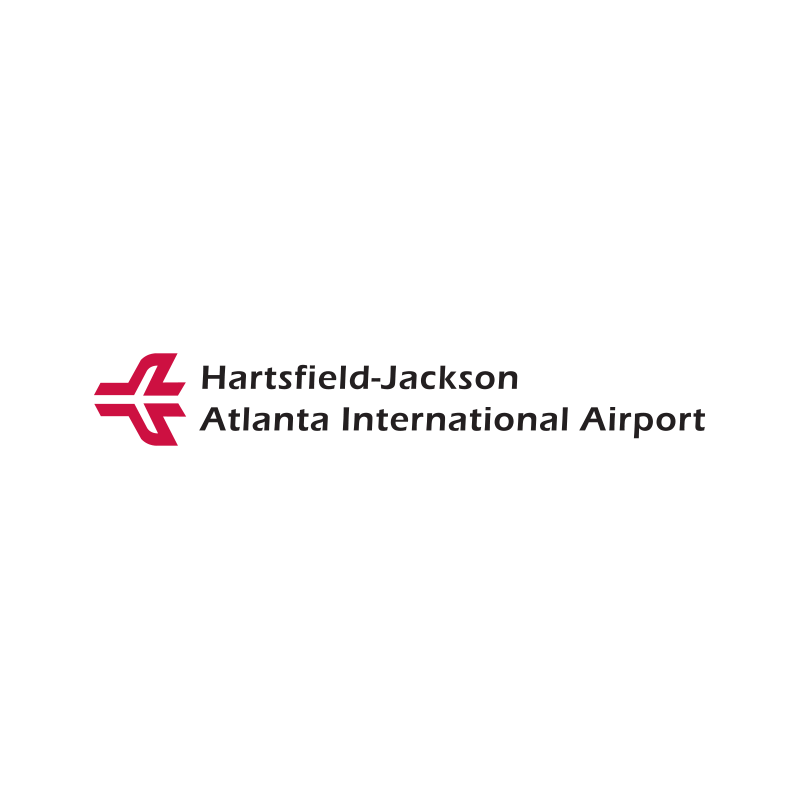Atlanta, Georgia, is only the 36th most populous city in the United States, as it has just over 500,000 residents. However, the entire Atlanta metro area is home to over six million residents, making it one of the most populated metro areas in the US. Because of this, it is no wonder that it is home to an extremely busy airport,  Hartsfield-Jackson Atlanta International Airport (ATL).
Hartsfield-Jackson Atlanta International Airport (ATL).
However, interestingly enough, Hartsfield-Jackson is considered to be the busiest airport in the world. In 2024 alone, the airport saw over 100 million total passengers pass through its doors. This was significantly higher than even the second-busiest airport in the world,  Dubai International Airport (DXB) in Dubai, United Arab Emirates, which saw just over 92 million passengers. Furthermore, Hartsfield-Jackson Airport has one of the most unique airport layouts in existence. Whereas many airports have expanded to several different terminals over the years, such as
Dubai International Airport (DXB) in Dubai, United Arab Emirates, which saw just over 92 million passengers. Furthermore, Hartsfield-Jackson Airport has one of the most unique airport layouts in existence. Whereas many airports have expanded to several different terminals over the years, such as  Los Angeles International Airport (LAX), which operates nine terminals, or
Los Angeles International Airport (LAX), which operates nine terminals, or  Dallas/Fort Worth International Airport (DFW), which operates five terminals, the Atlanta airport has kept only its two main terminals. Let’s take a closer look at why this busy airport only operates two terminals, as well as how it manages to maintain its significant operations under this unique configuration.
Dallas/Fort Worth International Airport (DFW), which operates five terminals, the Atlanta airport has kept only its two main terminals. Let’s take a closer look at why this busy airport only operates two terminals, as well as how it manages to maintain its significant operations under this unique configuration.
The Early Days Of Hartsfield-Jackson Atlanta International Airport
Hartsfield-Jackson Atlanta International Airport (ATL) can first be traced back to the mid-1920s. The airport first began with a five-year lease on 287 acres that covered an abandoned auto racetrack called the Atlanta Speedway. This airport, which was signed into effect by Mayor Walter Sims, was originally named Candler Field, after Coca-Cola executive and former mayor, Asa Candler. Candler Field first began commercial operations on September 15, 1926, with a Florida Airways mail plane flying from Jacksonville, Florida.
However, several airlines joined the field’s operations in the late 1920s and early 1930s. This included Pitcairn Aviation, which later became known as Eastern Air Lines, and began in May 1928. In June 1930, Delta Air Service began its operations, which marked the start of the dominance that Delta Air Lines would see for many years to come. Both Eastern Air Lines and ![]() Delta Air Lines would utilize this airport as their main hubs.
Delta Air Lines would utilize this airport as their main hubs.
In the 1940s, Candler Field was utilized as a military airfield by the United States Army Air Force. The airport became increasingly busy during the 1940s, when it was renamed Atlanta Municipal Airport. More than one million passengers passed through the airport in 1948. This led to both Delta and Eastern increasing their operations from the airport, with Southern Airways also joining the mix.
The Introduction Of The Original Jet Terminal
In mid-1956, Capital Viscounts began operating scheduled flights with turbine airliners. However, in 1957, Atlanta Municipal Airport saw its first jet airliner land on its runway, a prototype Sud Aviation Caravelle. Later that year, Atlanta Airport executives commissioned work for a new $21 million terminal, later designated as the Jet Terminal.
In September 1959, Atlanta Municipal Airport began operating scheduled commercial flights with jets when Delta Air Lines began flying Douglas DC-8s through the airport. The airport officially opened its new Jet Terminal in May 1961. This terminal was the largest in the country and could handle over six million passengers per year, due to its six-pier concourses radiating from a central building.
This allowed the airport to begin operating transatlantic flights. The first was a Delta Air Lines and Pan Am DC-8 flight to Europe via Washington, DC. However, the first scheduled nonstop international flight was operated by Eastern Air Lines to Mexico City and Jamaica in 1971, the same year the airport was renamed to William B. Hartsfield Atlanta Airport. Nonstop flights to Europe began in 1978 when Delta Air Lines flew to London Gatwick Airport (LGW).
A History Of The Introduction Of The Midfield Terminal
The new Jet Terminal caused a significant increase in air traffic at the Atlanta airport. To help accommodate this new traffic, Mayor Maynard Jackson commissioned work for a new terminal, which became the present midfield terminal complex, in 1977. The new complex, which initially consisted of a North and South Terminal, Concourses A through D, and half of Concourse T, opened in September 1980. This new terminal was designed to accommodate up to 55 million passengers annually.
In 1987, the airport further extended Concourse T, which was mostly used for international traffic. However, before the 1996 Summer Olympics in Atlanta, the airport also opened up a new Concourse E, converting Concourse T to domestic flights. The airport also introduced its fifth runway in the early 2000s. Since then, the airport has operated the following runways:
|
Runway |
Length (m) |
Length (ft) |
Surface |
|---|---|---|---|
|
8L/26R |
2,743 meters |
9,000 feet |
Concrete |
|
8R/26L |
3,048 meters |
9,999 feet |
Concrete |
|
9L/27R |
3,776 meters |
12,390 feet |
Concrete |
|
9R/27L |
2,743 meters |
9,000 feet |
Concrete |
|
10/28 |
2,743 meters |
9,000 feet |
Concrete |
The airport’s fifth runway was officially opened in 2006, and it was used to ease traffic problems caused by the significant number of smaller aircraft on the larger runways. This allowed the airport to begin operating with triple simultaneous landings. The airport was also officially renamed to Hartsfield-Jackson Atlanta International Airport (ATL) in 2003. In 2012, ATL opened its international terminal and Concourse F, with the terminal on the other side, which was introduced in the 1980s, becoming the domestic terminal.
The Current Operations At Hartsfield-Jackson Atlanta International Airport
The Hartsfield-Jackson Atlanta International Airport has grown to serve over 100 million passengers annually since the introduction of its new terminal, first reaching this milestone in 2015. It has also become one of the world’s busiest airports, topping the charts multiple times over the past several years. Historically, Delta Air Lines and Eastern Air Lines dominated the Atlanta airport in the 1970s. However, ![]() United Airlines, Southern Airways, Piedmont Airlines, Northwest Airlines, and TWA also had a presence at the airport. This changed in 1978 after airlines were deregulated.
United Airlines, Southern Airways, Piedmont Airlines, Northwest Airlines, and TWA also had a presence at the airport. This changed in 1978 after airlines were deregulated.
Eastern Air Lines was the largest airline at the airport during the 1970s. However, Delta Air Lines adopted the hub-and-spoke route system, utilizing ATL as a hub between the Midwest and Florida. When the new terminal opened in 1980, Delta had a significant presence, operating Concourse A and most of Concourse B. Its presence increased heavily after Eastern ceased operations in 1991. The airline maintained a monopoly in ATL, with American Airlines deciding to create a hub in Miami and TWA abandoning its hub at the airport in 1994.
Today, Hartsfield-Jackson Atlanta International Airport handles over 2,000 daily arrivals and departures. The airport serves more than 150 domestic destinations and 70 international destinations. Delta Air Lines remains the dominant airline of the airport, flying around 75% of the flights. Some of the airline’s most popular destinations include: Cancún International Airport (CUN), Mexico City International Airport (MEX), Toronto Pearson International Airport (YYZ), Punta Cana International Airport (PUJ), and Sangster International Airport (MBJ) in Montego Bay, Jamaica. Additionally, some of the other unique international destinations flown from ATL include:
|
Airport |
Destination |
Airline Operating |
|---|---|---|
|
Paris Charles de Gaulle Airport (CDG) |
Paris, France |
Delta Air Lines, Air France |
|
Cancún International Airport (CUN) |
Cancun, Mexico |
Delta Air Lines, Frontier Airlines, Southwest Airlines |
|
Amsterdam Airport Schiphol (AMS) |
Amsterdam, Netherlands |
Delta Air Lines, KLM |
|
London-Heathrow International Airport (LHR) |
London, UK |
Delta Air Lines, British Airways, Virgin Atlantic |
|
Incheon International Airport (ICN) |
Seoul, South Korea |
Delta Air Lines, Korean Air |
|
Toronto Pearson International Airport (YYZ) |
Toronto, Canada |
Delta Air Lines, Air Canada |
|
New Jorge Chávez International Airport (LIM) |
Lima, Peru |
Delta Air Lines, LATAM Peru |
How Many Busy Airports Have Utilized Multiple Terminals
Airports around the world have grown significantly, especially as air travel demand has continued to grow. Because of this, global airports have had to scale their operations to accommodate more passengers, aircraft, and airline partners. One of the most effective ways to manage this growth is through airport expansion.
Historically, many airports have opted to expand through the addition of multiple terminals. This allows airports to efficiently distribute traffic and streamline passenger flow. Smaller regional airports can often manage with one or two terminals, but major international hubs usually outgrow that simplicity due to the sheer complexity of operation required for the extreme amount of air traffic.
Additionally, many large airports operate as hubs for airlines. This means that large airports often dedicate entire terminals to specific carriers or airline alliances. This allows for smoother connections within alliances, like  SkyTeam or
SkyTeam or ![]() Star Alliance, reduces congestion, and centralizes resources such as lounges, gates, and check-in areas. Finally, aircraft movement is a major factor in expanding terminals. More terminals spaced across the airfield help reduce aircraft taxi times, minimize delays, and support multiple simultaneous arrivals and departures.
Star Alliance, reduces congestion, and centralizes resources such as lounges, gates, and check-in areas. Finally, aircraft movement is a major factor in expanding terminals. More terminals spaced across the airfield help reduce aircraft taxi times, minimize delays, and support multiple simultaneous arrivals and departures.
Why Hartsfield-Jackson Atlanta International Airport Only Utilizes Two Terminals
Interestingly enough, ATL is unique among major airports in that it operates with only two terminals. The airport is made up of the domestic terminal, which consists of Terminal South and Terminal North, and the International Terminal, which also includes Terminal F. However, although it only includes two terminals, the airport’s operations are set up due to a highly efficient and centralized design.
Overall, Hartsfield-Jackson Atlanta International Airport utilizes a single linear concourse layout. From the main terminal complex, passengers have access across seven parallel concourses. Passengers can connect to each concourse via an underground train or pedestrian walkways. Furthermore, since ATL is dominated by Delta Air Lines, which flies nearly 75% of all operations, there is no need to divide terminals between designated airlines.
In general, the two-terminal system utilized by ATL works because of the overall layout of the airport. It was specifically designed for centralized operations, dating back to the introduction of early terminals at the airport. The layout also minimizes walking distances and supports massive traffic levels without requiring the complexity of multiple terminal buildings.



